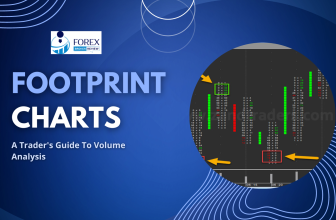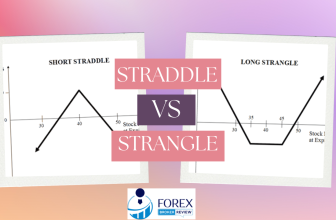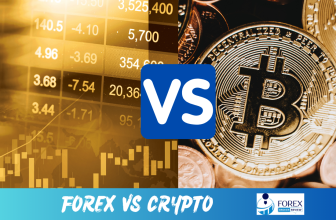
Gold trading is a fascinating and financially fruitful endeavor that attracts traders worldwide. This article aims to explore the intricacies of gold trading, including its various methods, advantages, and factors that influence its prices. Gold trading offers a plethora of options, ranging from CFDs and physical metal to gold futures, certificates, ETFs, stocks, and options.
Gold, known as a safe haven asset, safeguards investors during market turmoil due to its limited supply and physical characteristics. Furthermore, gold trading is measured in Troy Ounces against a designated currency, commonly the dollar. This article will delve into the advantages of gold trading, such as avoiding the need to transport or store physical gold and utilizing leverage to enhance rewards and risks.
Key Takeaways
- Gold trading can be done through various methods such as CFDs, physical metal, gold certificates, gold futures, gold-based ETFs, stocks, and gold options.
- Gold is considered a safe haven asset that protects investors during market turmoil.
- Gold CFDs are the cheapest way to trade the commodity, with low spreads and no hidden fees or commissions.
- Factors such as supply and demand, political uncertainty, currency movements, central bank actions, long-term trends, and volatility greatly influence the price of gold.
What is Gold CFD Trading?
Gold trading refers to the buying and selling of gold through various methods such as CFDs, physical metal, gold certificates, gold futures, gold-based ETFs, stocks, and gold options, allowing traders to profit from both rising and falling markets. Traders can utilize different gold trading strategies to capitalize on market movements and manage risk effectively.
These strategies may include trend following, breakout strategies, and fundamental analysis to identify high probability trade setups. Risk management is a crucial aspect of gold trading, and traders may employ techniques such as trailing stops to lock in profits and limit potential losses. By implementing sound risk management practices, traders can mitigate the inherent risks associated with gold trading and maximize their potential for success.
Methods of Gold CFD Trading
Various methods can be employed to engage in the trading of this precious metal, including CFDs, physical metal, gold certificates, gold futures, gold-based ETFs, stocks, and gold options.
- CFDs: Contracts for Difference allow traders to speculate on the price movement of gold without owning the physical metal. It offers leverage and flexibility but carries risks such as market volatility and potential losses.
- Physical Metal: Trading physical gold involves buying and selling the actual metal in the form of bars or coins. It requires storage and transportation, and its value is affected by factors like purity and demand.
- Gold Certificates: These represent ownership of a certain amount of gold and are issued by banks. They offer a convenient way to trade gold without physical possession.
- Gold Futures: These contracts obligate traders to buy or sell gold at a predetermined price and date in the future. They provide leverage but have time limitations and high minimum contract sizes.
- Gold-based ETFs: Exchange-Traded Funds track the price of gold and can be bought and sold on stock exchanges. They provide exposure to gold with small capital amounts but rely on the management of a third party.
- Stocks: Investing in gold mining companies allows traders to gain exposure to the gold market without dealing with the physical commodity. The value of these stocks is influenced by factors such as production costs and mining operations.
- Gold Options: These financial derivatives give investors the right to buy or sell gold at a specific price and date. However, they can result in higher losses and require a deep understanding of options trading.
Gold trading strategies involve analyzing factors that affect gold prices, such as supply and demand, political uncertainty, currency movements, and central bank actions. Traders can use technical analysis tools like chart patterns and indicators to identify potential entry and exit points.
Advantages of Gold CFD
One advantage of engaging in the trading of gold is the potential for profit in both rising and falling markets. Trading strategies can be utilized to take advantage of market trends and volatility in order to maximize returns. Trend following and breakout strategies can be particularly effective in the gold market, as gold tends to trend strongly.
Additionally, risk management plays a crucial role in gold trading. Traders can employ various risk management techniques such as using trailing stops to lock in profits and limit losses. By implementing effective trading strategies and employing sound risk management techniques, traders can optimize their chances of success in the gold market.
Factors Affecting Gold Prices
Political uncertainty and instability can contribute to the rise in gold prices as it is considered a safe haven, safeguarding investors during market turmoil. The role of political factors in influencing gold prices cannot be underestimated. When there is political unrest or uncertainty, investors tend to seek refuge in gold due to its perceived stability and value retention.
Additionally, the strength or weakness of the US dollar, which is influenced by political factors, can also impact gold prices. Central banks play a significant role in gold trading as they hold large reserves of the precious metal and can affect its supply and demand. Their decisions regarding interest rates, monetary policies, and gold purchases or sales can have a profound effect on gold prices. Therefore, keeping an eye on political developments and central bank actions is crucial for understanding and predicting gold price movements.
- Political uncertainty and instability contribute to the rise in gold prices as it is considered a safe haven asset.
- The strength or weakness of the US dollar, influenced by political factors, can impact gold prices.
- Central banks play a significant role in gold trading, influencing its supply and demand through their decisions and actions.
Gold as a Safe Haven
Investors often turn to gold during times of market turmoil and uncertainty due to its reputation as a safe haven asset. Gold has a long history of being a store of value and a hedge against inflation and currency fluctuations. When other assets like stocks or currencies are experiencing volatility, gold tends to maintain its value or even increase in price. This makes it an attractive option for investors looking to protect their portfolios and reduce risk.
Market Timing for Gold CFD Trading
Market timing for gold trading can be influenced by seasonal factors such as specific months, like March and October, which have historically shown favorable opportunities due to potential market pullbacks. Traders can take advantage of these periods by implementing various trading strategies and risk management techniques. For example, trend following and breakout strategies can be effective during these volatile periods.
Additionally, traders can use fundamental analysis to identify high probability trade setups. It is also important for traders to closely monitor market volatility, especially during the start of the London session and the overlap of the London and New York markets, as these times tend to have higher volatility for gold trading. By carefully considering these factors and implementing appropriate trading strategies and risk management techniques, traders can optimize their market timing for gold trading.
Frequently Asked Questions
How can I use gold trading to hedge against market turmoil?
Gold trading can be used as a long-term investment strategy to hedge against market turmoil. It offers several advantages for portfolio diversification. Gold has historically been considered a safe haven asset during times of economic uncertainty.
Its limited supply and physical characteristics contribute to its value as a hedge. By incorporating gold trading into a portfolio, investors can reduce overall risk and potentially mitigate losses during turbulent periods. Additionally, gold trading provides an opportunity for investors to profit from both rising and falling markets, offering flexibility and potential returns.
What are some common gold trading strategies that traders use?
Gold trading strategies are numerous and can be tailored to fit individual trading styles and goals. Traders often employ trend following strategies, taking advantage of gold’s strong and predictable trends. Breakout strategies are also common, capitalizing on significant price movements.
Fundamental analysis helps identify high probability trade setups, considering factors such as supply and demand, political uncertainty, and currency movements. Additionally, technical indicators like the Average True Range can measure volatility, aiding in trade decisions. Implementing trailing stops can help secure profits while trading gold.
Are there any specific technical indicators that can help with analyzing gold price movements?
Gold price analysis can be enhanced through the use of specific technical indicators. Traders often rely on indicators such as moving averages, relative strength index (RSI), and Bollinger Bands to analyze gold price movements.
Moving averages help identify trends by smoothing out price fluctuations over a specific time period. RSI measures the momentum of price changes, indicating overbought or oversold conditions. Bollinger Bands provide information on volatility and potential price breakouts. These indicators assist traders in making informed decisions based on historical price data.
What are the tax implications of trading gold?
Tax implications of trading gold vary depending on the country and its tax regulations. In many jurisdictions, trading gold is subject to capital gains tax, which is levied on the profit made from selling gold.
The tax rate may vary depending on factors such as the holding period and the individual’s tax bracket. It is important for traders to consult with a tax professional or research the specific tax regulations in their country to understand the tax implications of trading gold.






